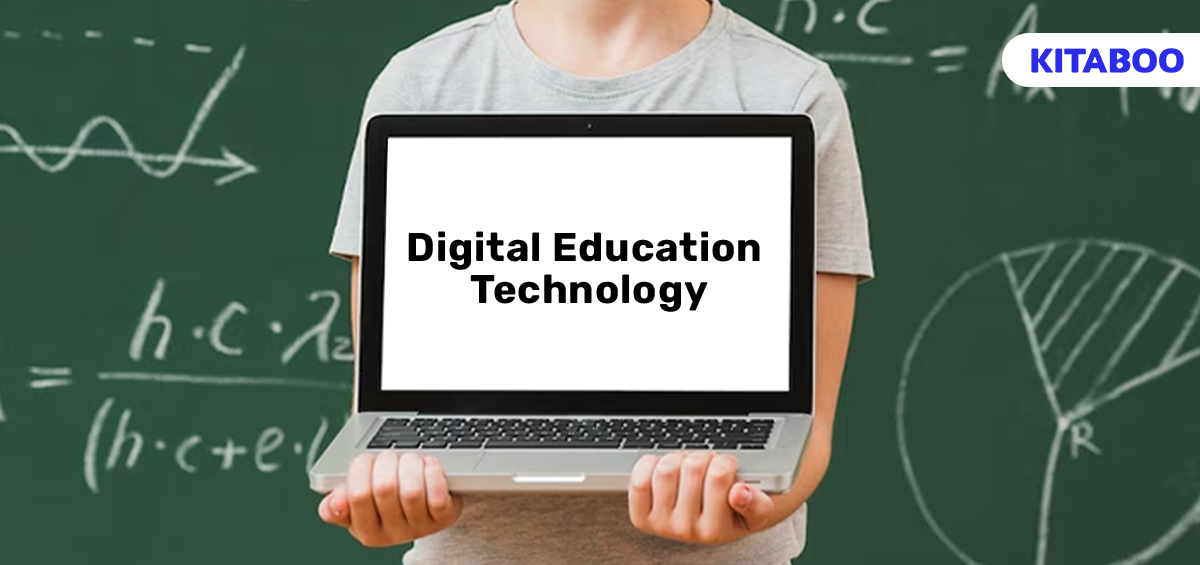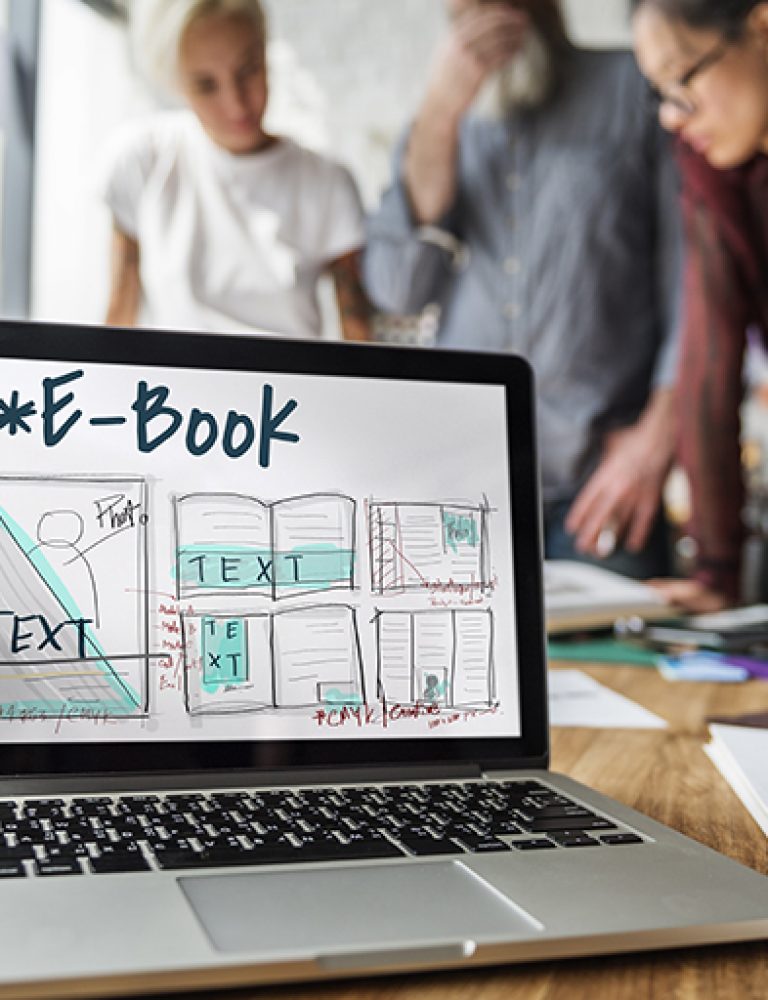For many decades, the primary product of K12 publishers was textbooks and physical guides across a wide range of subjects and formats. However, with the demand for print products dwindling, K12 publishing is also undergoing a digital revolution.
The focus on learning and the number of learners continues to grow, with greater strides being made to make education more inclusive. Advances in digital education technology are enabling the K12 publishing industry to reimagine the learning process and deliver more value to learners.
For instance, KITABOO‘s innovative digital publishing solution enables K12 publishers to bring out innovative products – from eBooks to eCourses.
Let’s understand what contemporary K12 learning resources look like and how publishers can adopt a holistic approach toward producing cost-effective, high-impact learning resources.
Table Of Contents
I. A Snapshot of Evolving Learner Trends
II. What is Digital Education Technology?
III. 7 Benefits of Digital Education Technology
- Streamlining the Production Process
- Building a Versatile Product Range
- Boosting Interactivity
- Building Mobile-First Products
- Encouraging Micro-Learning
- Designing Accessible Products
- Robust Data Analytics
IV. The Takeaway
A Snapshot of Evolving Learner Trends
As of 2023, the number of smartphone users stands at 6.8 million, as opposed to 5 billion unique mobile users in 2022. This number will keep growing with more consumers accessing online games, shopping, social media, and other content online.
The interactive, engaging nature of the Internet of today is also reflected in learners’ expectations of how they wish to learn. Learners aspire for the learning journey to be an interactive, engaging experience, with elements such as gamification, multimedia content, eBooks, and collaborative experiences included in the mix.
Hence, K12 publishers need to rethink their products as well as the strategies used to produce them in an efficient, cost-effective manner.
What is Digital Education Technology?
Digital education technology is a tech-enabled solution that K12 publishers are leveraging to create, publish, distribute, and track the usage of multimedia learning resources and courses in a wide range of formats.
This single, unified interface automates and streamlines K12 content production and distribution operations across the entire workflow of processes.
For instance, KITABOO’s flexible, versatile solution enables K12 publishers to build content that appeals to diverse learning styles as per the needs of their target audiences. They can introduce elements such as gamification and immersive experiences into the mix to make learning experiences more engaging.
7 Benefits of Digital Education Technology
Let’s understand how K12 publishers can get more innovative with their products and build a successful business model with the use of digital education technology.
Streamlining the Production Process
One of the benefits of using a state-of-the-art digital publishing platform is that businesses can run the entire production cycle with a lean team. A wide range of tasks get automated.
The cloud-based approach to digital publishing enables easy storage, location, and movement of raw content, as well as finished products. Team members can collaborate with ease and expedite the production of high-quality K12 resources.
Building a Versatile Product Range
K12 publishing traditionally focused on producing a wide range of physical textbooks. But with digital, the scope widens due to the versatility of the medium.
K12 publishers can create eBooks, e-courses, digital libraries, and collections of on-demand resources. They market individual products or build courses around the content.
Access to innovative digital education technology allows them to market and distribute products securely via their own eStores. A digital rights management system enables them to ensure that only authorized users can have access to products, thus helping them protect their revenues.
Boosting Interactivity
K12 content can be presented in multiple formats that encourage interactivity.
For instance, KITABOO’s platform enables eBooks to be presented as an ePUB file. This format allows learners to highlight sections, add comments, search for content, and adjust the font size based on reading preferences.
eCourses can be designed using a mix of video, animated visualizations, infographics, and quizzes. The introduction of gamification adds a whole new level of interactivity with the addition of challenges, rewards, storylines, sounds, and special characters.
Gamified K12 content can drive higher learner engagement and, in turn, superior learning outcomes.
Building Mobile-First Products
Today, learners are using mobile for a wide range of applications at an earlier age. Mobile is emerging as a tool for learning, revision, and skill-building. The value of the mobile learning market is expected to touch $155.81 billion in 2026 from $42.16 billion in 2021.
A growing number of K12 providers and publishers are prioritizing content that can be consumed via mobile, taking advantage of the growing popularity of mobile engagement.
Access to superior digital publishing technology enables K12 publishers to create and disseminate learning resources that are optimized for mobile consumption with ease.
Encouraging Micro-Learning
Today, learning resources have come a long way since the production of heavy physical books. The size of the content has shrunk, with learning resources being conceptualized as bite-sized pieces that can be consumed within minutes or even seconds.
This trend is gaining popularity due to the decrease in attention spans of learners.
Content is also now accessible on demand in the form of videos, audio representations, infographics, eBooks, and interactive, gamified content. Complex concepts can be explained through multimedia representations, and content pieces are interlinked to make learning an addictive experience.
Referred to as micro-learning, learners can spend even a few minutes to understand a concept. They can use such resources to enhance self-learning and revise lessons quickly.
Also Read: eBook Conversion Service
Designing Accessible Products
Not all learners respond to the traditional classroom lecture format.
Many learners struggle with learning challenges or physical, intellectual, and mobility challenges. They may be unable to travel to school, engage with static textbooks, or attend spoken lectures due to a visual or hearing challenge.
They may also experience a language barrier. Technology can bridge these gaps, enabling K12 publishers to apply the principle of universal design and create versatile products that can be effectively used by all learners at the same time.
For instance, an eBook can be published in multiple languages, come with a read-aloud functionality, and include videos with captions.
Robust Data Analytics
Digital publishing suites come with robust data analysis that enables K12 content creators to track the effectiveness of every content piece, from a single infographic to an entire eBook.
They can understand the viewership and engagement numbers, how often a learner logs, and at what time. They can predict learner behavior and keep innovative content creation and distribution strategies accordingly.
The Takeaway
Digital education technology is changing the flavor of K12 education by making it interactive, engaging, and accessible for a wide spectrum of learners. Publishers of K12 content can partner with education technology specialists to build their tech stack and produce superior-quality education products.
Education providers and publishers can use KITABOO – the digital textbook platform for the purpose of publishing, distributing, marketing, and amplifying their products to learners worldwide.
Suggested Reads:
Discover How An Ebook Conversion, Publishing & Distribution Platform Can Help You
Kitaboo is a cloud-based content platform to create-publish & securely distribute interactive mobile-ready ebooks.
You May Also Like









